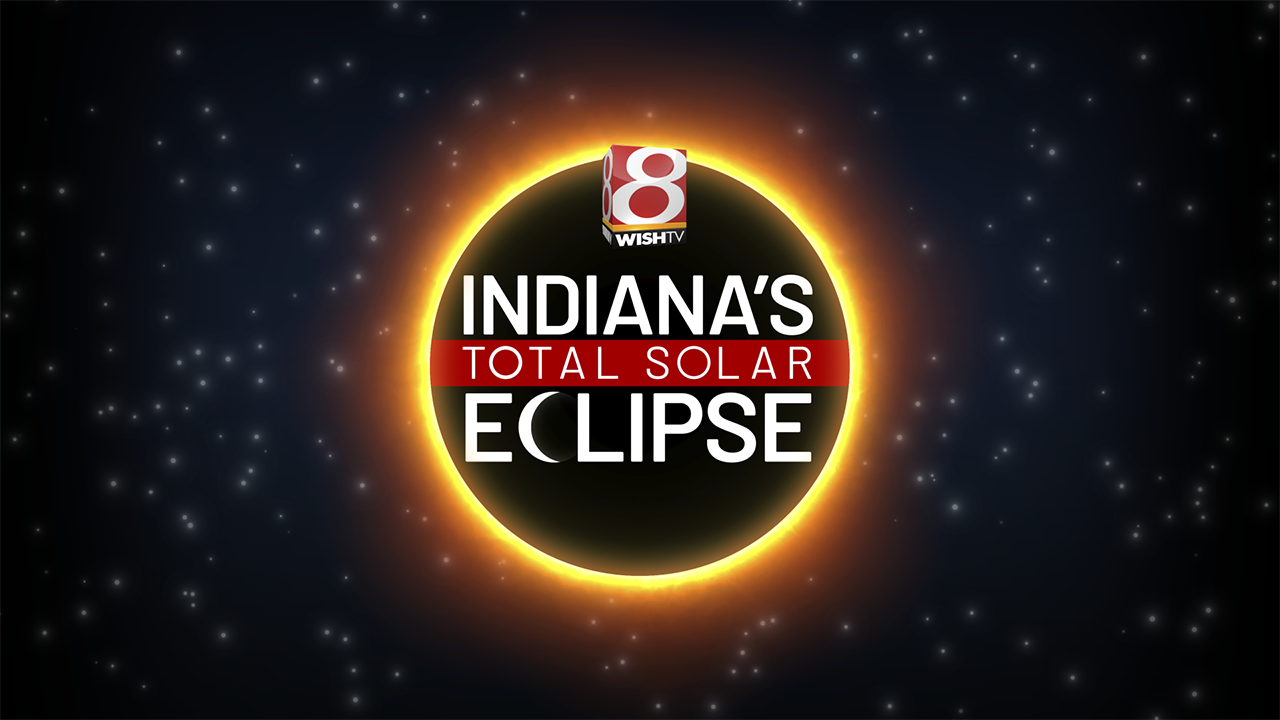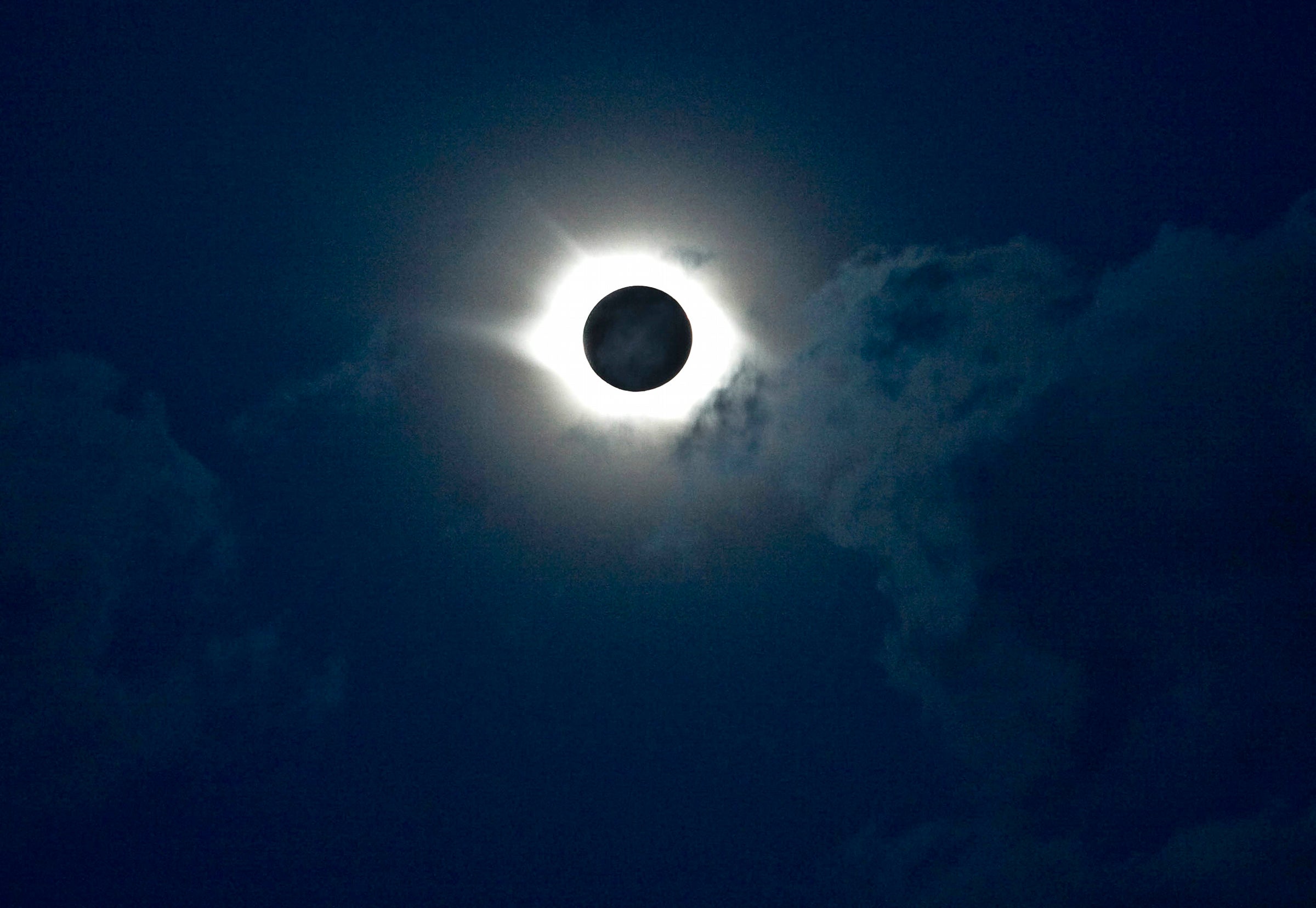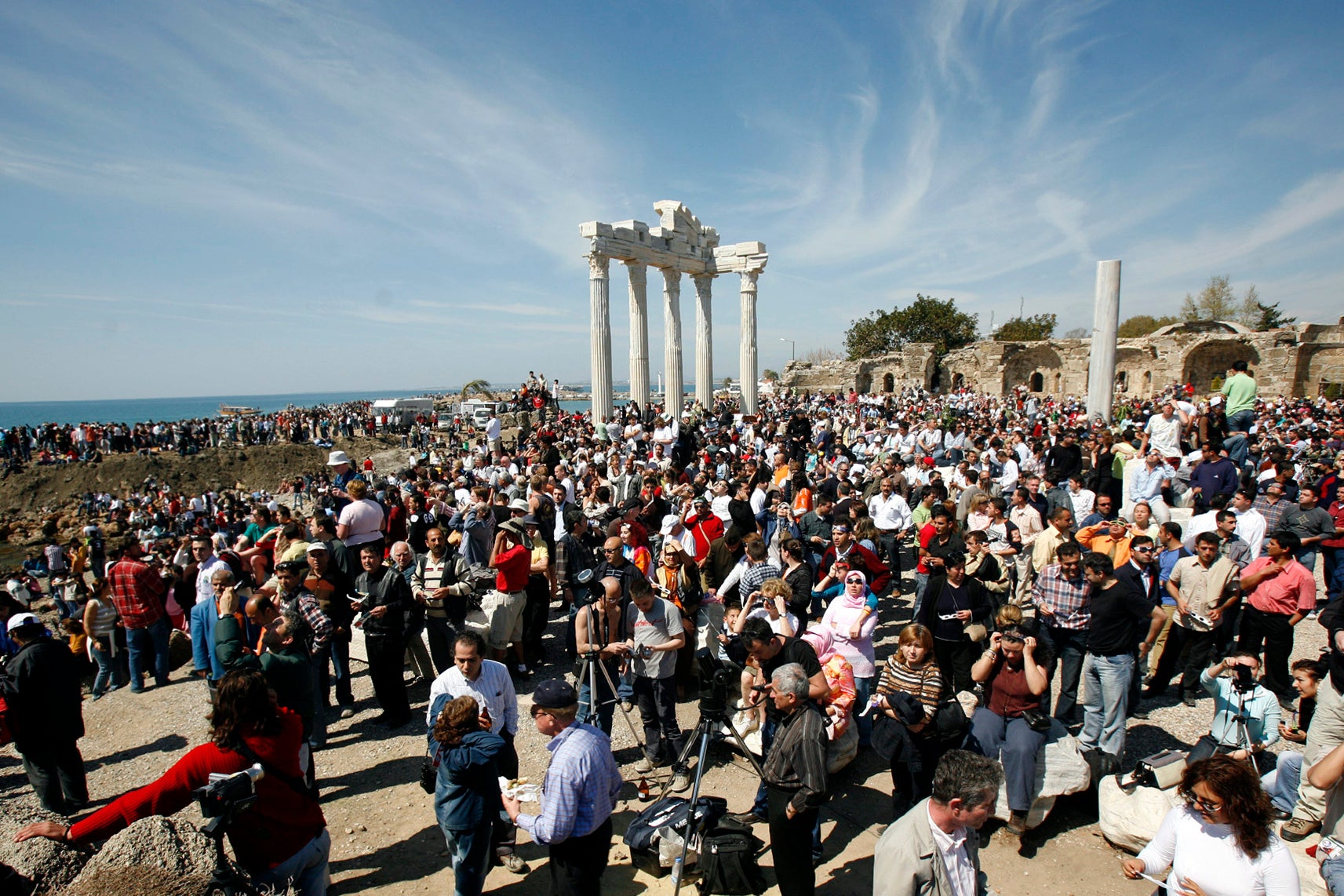WISH-TV preview: Total eclipse coverage, FAQs, and more
Want to get in an eclipse mood? Listen to our #WISHEclipse playlist on Spotify!
Interactive radar | Latest forecast | Traffic watch | Previous solar eclipse coverage
INDIANAPOLIS (WISH) — At 3:06 p.m. Monday, darkness will swallow the skies over Indianapolis, clouding the city in all-around twilight for four minutes as the moon crosses over the sun.
It is the moment millions in the United States have been waiting for – the total solar eclipse.
Thousands are expected to flock to Indianapolis to witness this celestial phenomenon, and there are dozens of events taking place to celebrate this once-in-a-lifetime event.
Live action
Familiar faces from WISH-TV will be popping up live across the Indianapolis area to keep you in the know about all things eclipse.
Throughout Monday, we’ll have teams at the Indianapolis Motor Speedway, White River State Park, Conner Prairie, the Children’s Museum of Indianapolis, IU Bloomington, Butler University, and even live from Austin, Texas, where I-Team 8 reporter Cat Sandoval will take off in a special eclipse flight tracking the path of totality.
Stay up-to-date with all the eclipse happenings with WISH-TV, on-air and online.
Have an eclipse question? WISH-TV has you covered
Curious about how rare an eclipse is or what the traffic will look like in Indy on eclipse day? Look no further, WISH-TV has you covered.
What time will the eclipse reach totality?
In Indianapolis, the track of the eclipse – from when the moon crosses over the sun, start to finish – will last around two and a half hours.
- Eclipse begins: 1:50 p.m.
- Totality: 3:06 – 3:09 p.m.
- Eclipse ends: 4:23 p.m.
REMEMBER: The sun cannot be directly looked at until totality has been reached. Make sure you have eclipse glasses on you so you can follow the moon as it makes its way across the sun.
- Complete timing of the total solar eclipse on April 8 in Indiana
- Are your eclipse glasses fake? Here’s how to tell if you have a pair
- Why you should pay attention to the ground during 2024 solar eclipse
What will the sky look like?
Once we hit totality, it will look like twilight for a few minutes.
During the darkness of totality, many of our neighbors in space will be visible in the sky. Here are the planets to keep an eye out for:
- Jupiter – the biggest planet in our solar system will be visible just above the sun
- Venus – Venus will show up opposite to Jupiter below the sun
- Saturn and Mars – these two planets will be a little harder to spot. They should appear further southwest toward the horizon
Many stars will also make an appearance, too.

(Provided Photo/Holcomb Observatory at Butler University)
How rare is a solar eclipse?
A total solar eclipse occurs on Earth around every 18 months. As over 70% of the Earth is water, finding a place to watch one can be tricky.
On average, people can see a partial solar eclipse every 2.25 years, but being in the path of totality and not having to travel for it is extremely rare.
The next partial solar eclipse to cross Indiana won’t be until 2044, but the next time we’ll be in the path of totality won’t be until Oct. 17, 2153.
- How rare is a total solar eclipse?
- How the 2024 total solar eclipse will be different than the 2017 eclipse
- Why Earth’s total solar eclipse is unique
What will the weather be like?
Currently, Monday is set to be partly cloudy and in the 70s, with some high, wispy clouds in the sky. However, the eclipse may have an impact on weather conditions.
Thick clouds, like clouds associated with large storm systems, may be unaffected, but thinner clouds might part as the moon’s shadow crosses Earth. Air temperatures may also drop, and winds could quiet and even change directions.
Keep an eye on the forecast with Storm Track 8’s interactive radar.
- How a solar eclipse can affect the weather
- Solar eclipse countdown: April 8 weather for previous years in central Indiana
How will animals act?
Many researchers, including those at the Indianapolis Zoo, are expecting to see some strange animal activity during the eclipse.
Some animals might get ready for bedtime, birds could change their songs, and insects might stop flying. Keep an eye on your house pets, too – they might act differently during totality.
Will schools be out for the eclipse?
Some are and some aren’t. For public and private schools in Indiana, several have either canceled classes or are hosting e-learning days. For a full list of schools, visit a list made by our reporting partners at WIBC.
For colleges, IUPUI and UIndy have canceled classes on Monday. Ivy Tech campuses across Indiana will be virtual, and Butler University has encouraged professors to cancel afternoon classes. Marian University classes will be in session.
What will traffic look like?
Traffic is going to be messy. Indiana State Police says they are hoping to prevent traffic congestion similar to what Kentucky saw during the 2017 eclipse.
Sgt. John Perrine told News 8 that the best options for motorists are to “plan ahead and be in a safe place in enough time to watch, or safely continue driving during the event.”
Perrine says stick to the highways, which might help prevent gridlock in city streets, and to have a full tank of gas – you never know how long you might be stuck on the road.
While driving, please do not leave your car unattended on the road if you do have to stop.
- Indiana police: On day of total solar eclipse, prepare for traffic
- Holcomb signs eclipse emergency response order
Photo galleries
WISH-TV preview: Total eclipse coverage, FAQs, and more
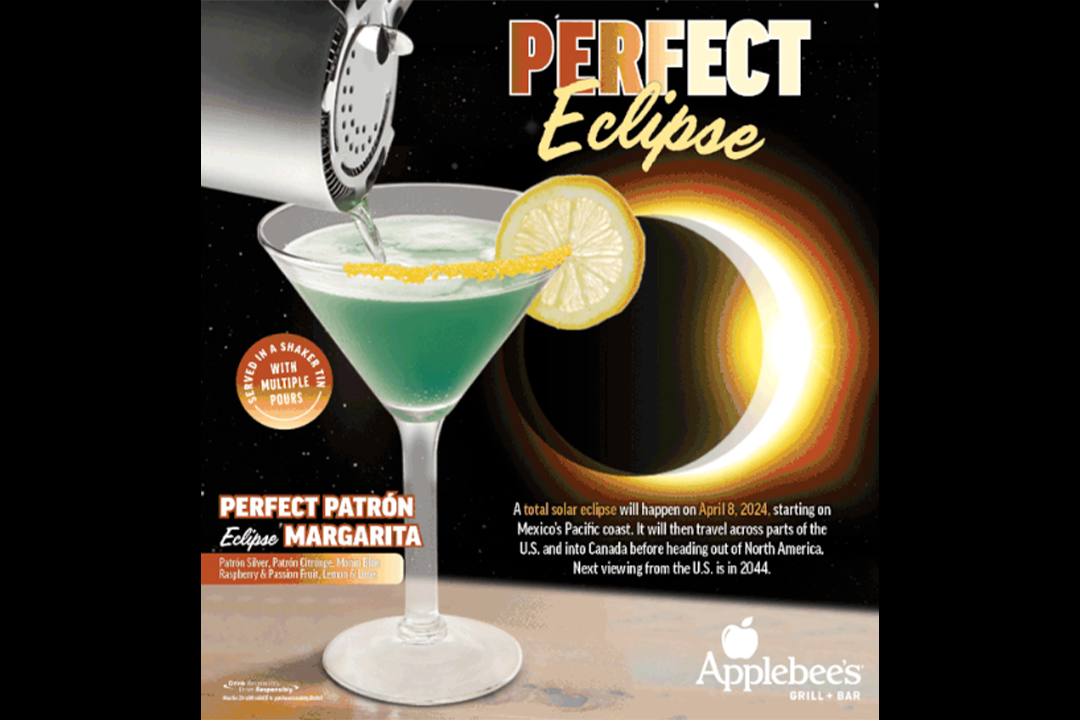 This drink is just for the adults! Select Applebee's restaurants are offering a new
This drink is just for the adults! Select Applebee's restaurants are offering a newPerfect Eclipse Margarita available now through April 14.
This cosmic cocktail is made with Patrón Premium Silver Blanco Tequila, Citrónge Orange Liqueur, Monin Blue Raspberry and Passion Fruit syrups, lemon, and lime.
Check your local Applebee's for availability. (Provided Photo/Applebee's)
WISH-TV preview: Total eclipse coverage, FAQs, and more
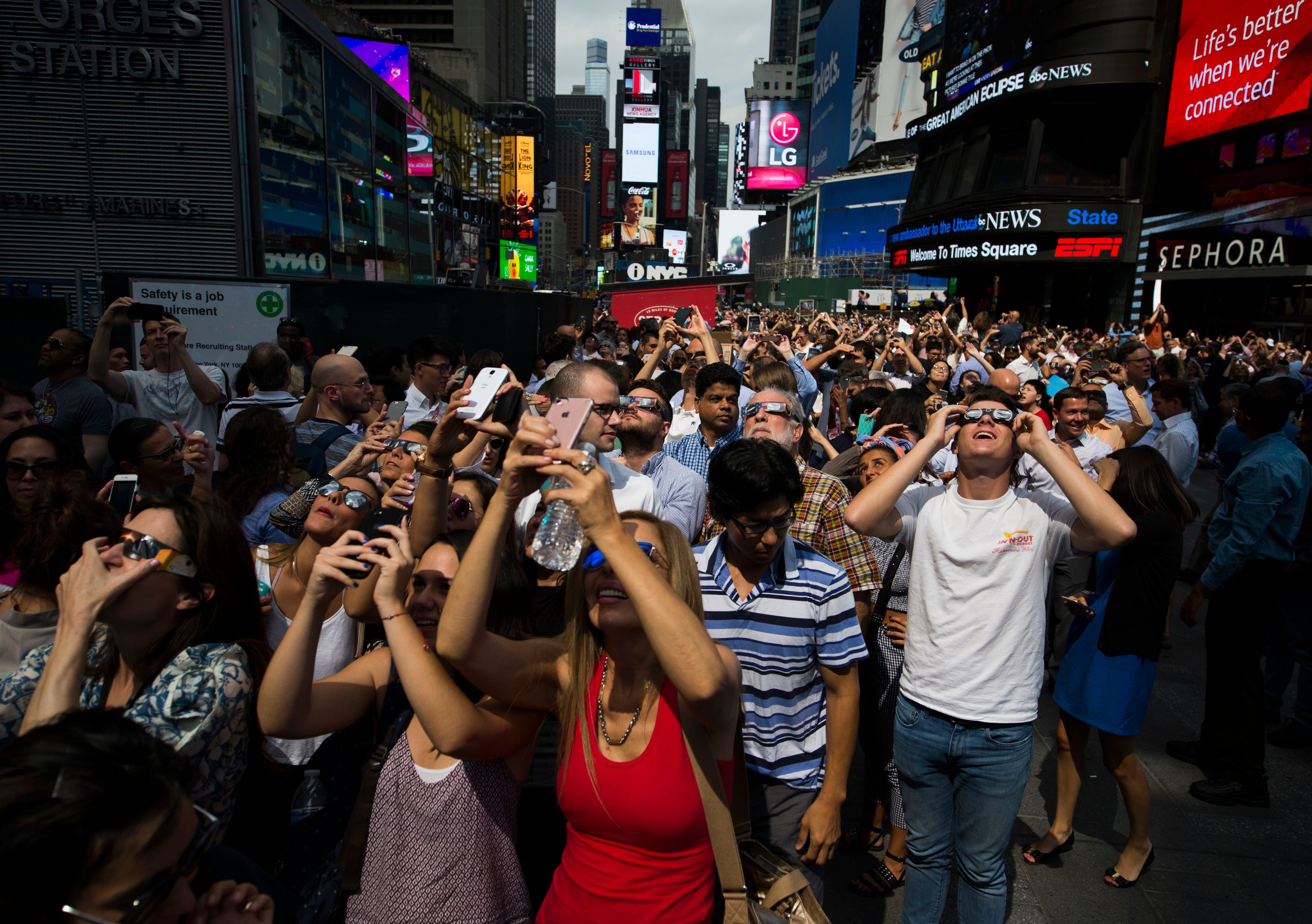 A crowd reacts to the view of a partial solar eclipse as it peaks at over 70% percent coverage on Monday, Aug. 21, 2017, in New York. (AP Photo/Michael Noble Jr.)
A crowd reacts to the view of a partial solar eclipse as it peaks at over 70% percent coverage on Monday, Aug. 21, 2017, in New York. (AP Photo/Michael Noble Jr.)
